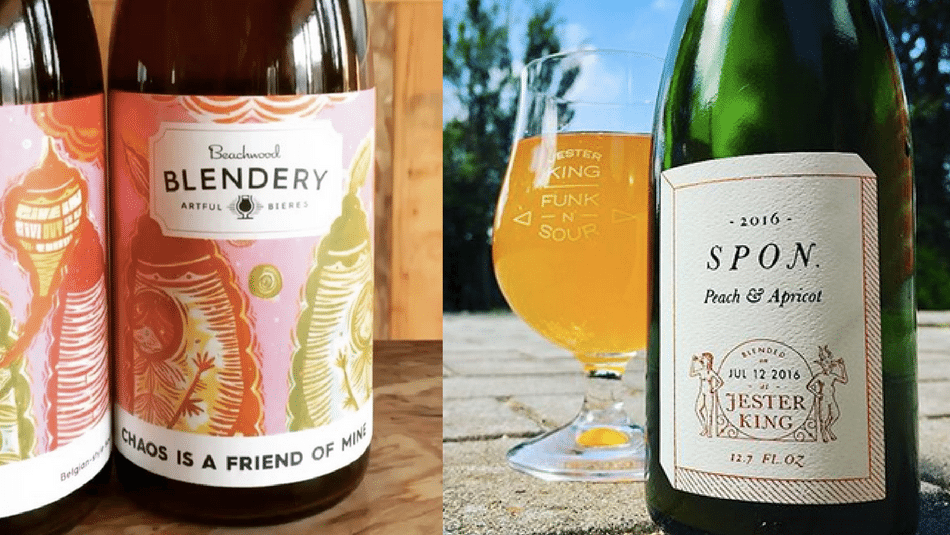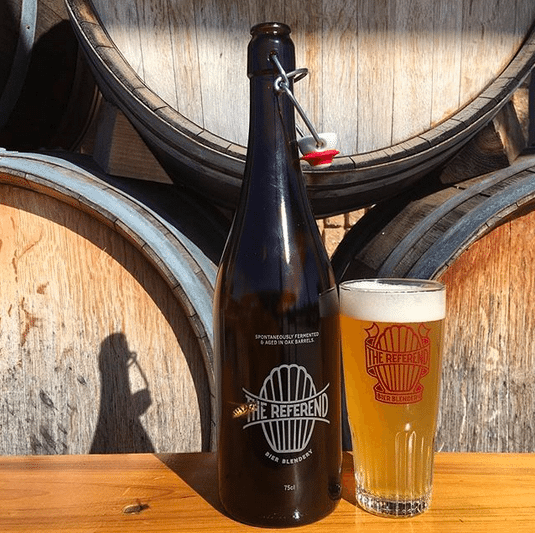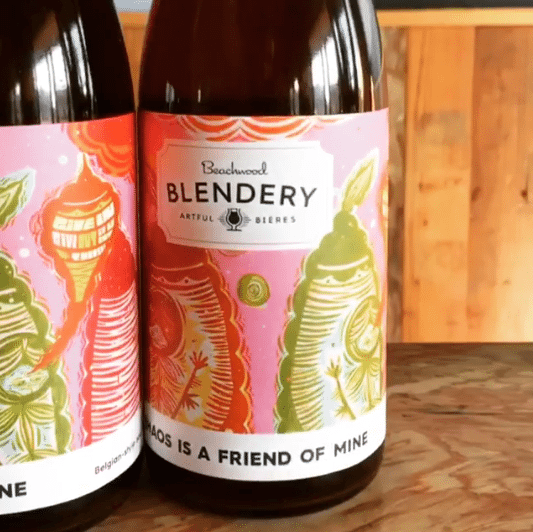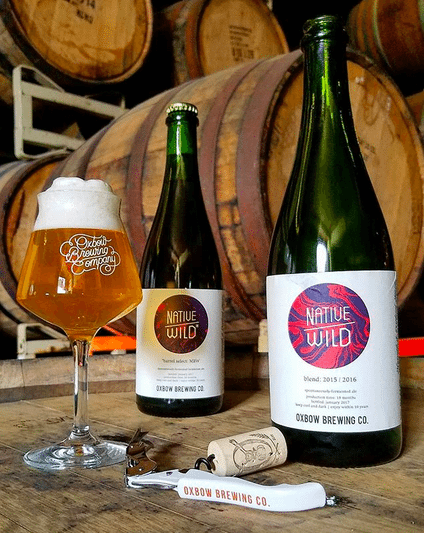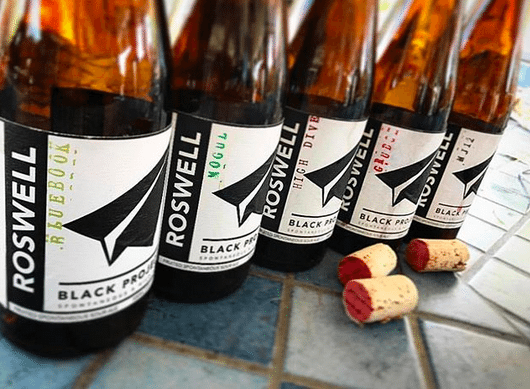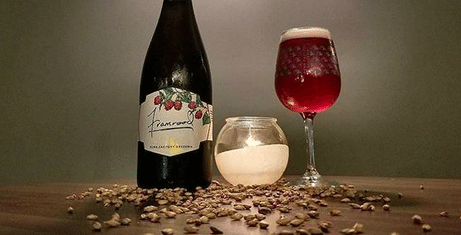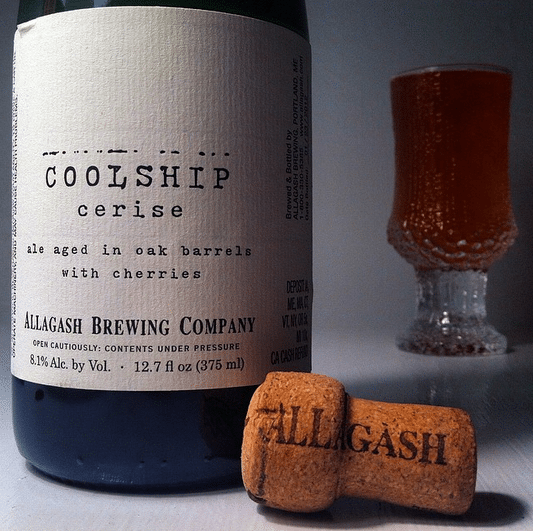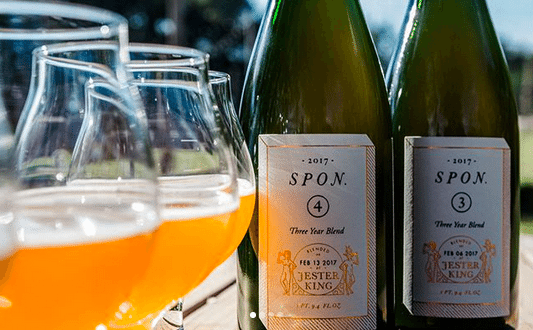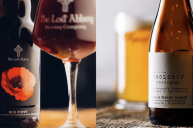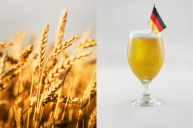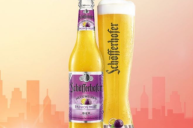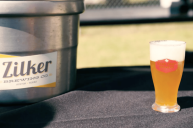The lambic world is a magical place where spontaneous fermentation creates a truly unique brew that sends you to your happy place. The process of this style is nothing short of miraculous. It takes dedication, patience, practices, skill, attention, and well, a bit of luck from good old mother nature.
Traditionally, lambics were produced from one particular area of Belgium - the Senne River Valley south of Brussels - and relied on the surrounding air to ferment the wort. According to All About Beer, lambics were originally produced from pale malt, unmalted wheat, hops, and wild fermentation, and relied on the microorganisms floating in the air to add characteristics to the wort - characteristics that make this style unique. Today, some of the old methods are still required to make the modern day lambic, including 30 percent unmalted wheat, spontaneous fermentation, and natural cooling.
https://www.instagram.com/p/BeIjh2fl-VW/?taken-by=jesterkingbrewery
When it comes to natural cooling, there is no arguing that it sets lambics apart from other beers. In this process, the wort is placed in giant vats known as coolships where it is left to cool.
Whether this is done on the roof or in the brewery with open windows, the surrounding microscopic organisms in the air enter into the wort, allowing it to ferment spontaneously. It's then aged in open, wooden casks for an extended period of time.
Lambics can then be left unblended, blended with fruit - with krieks, framboise, and cassis being the most popular styles - blended with other vintages turning it into a geuze, or have sugar added making it a faro. It's this process that is up to the blender for shaping the final flavor. According to the New York Times,
"Some of the beer may be aged with fruit, traditionally cherries or raspberries. The final steps involve the blending of individual barrels (often in multi-vintage blends, known in Belgium as gueuze), an art through which the brewers shape what nature gave them."
Shape they certainly do. While it may be unpredictable and costly, the results are beyond worth it. Fruity, tart, sweet, acidic, and funky, each lambic has a flavor profile that is unique to the blend.
Over the years, there has been some grief about American breweries using the term lambic. There is no doubt that the popularity of this style has grown as more American brewers have been intrigued on blending their own. The trouble is traditional lambics could only use the term if they were from Belgian, so the term lambic isn't quite accurate - like still calling sparkling wine Champagne if it's not from France.
https://www.instagram.com/p/BebaO_AFWkR/?taken-by=jesterkingbrewery
Now, thanks to to Jester King, Black Project, and the High Council for Artisanal Lambic Beers, they have a new term, Méthode Traditionnelle. Méthode Traditionnelle is America's new certification mark for lambic-style beers using traditional Belgian methods, so now there is no confusion about the American lambics. And thank goodness, because American craft breweries and blenderies are conjuring up some fantastic lambic-style beers.
If you're starting to feel yourself beer-thirtsy - or should I say lambic thirsty - then do yourself a favor and pour a glass of one of the top lambics in the US. From the Texas Hill Country's Jester King to Maine's beloved Allagash, these are the American lambics to drink right now.
7. Jung
Brewery: The Referend Bier Blendery
Location: Hopewell Township, NJ
A whole year old, Referend Bier Blendery does nothing but specialize in spontaneous fermentation. They have a few lambics on the beer list already, but one to try is Jung.
An unblended lambic, Jung will spend anywhere from 4 to 12 months aging in barrels, achieving the basis of what is the lambic. The Referend Bier Blendery also makes a hopped as well as cherry and raspberry version that's worth imbibing.
6. Coolship Chaos
Brewery: Beachwood Blendery
Location: Long Beach, CA
Coolship Chaos is the first 100 percent spontaneously fermented coolship from Beachwood Blendery. This funky blend is aged in barrels then bottle conditioned with priming sugar, allowing a natural fermentation to take place. One whiff and you get a nose full of lemon, apple, cedar, and farmhouse funk. Tart and complex, this is like chaos going on in a bottle - in a good way.
5. Native Wild
Brewery: Oxbow Brewing Company
Location: Newcastle and Portland, Maine
Spontaneously fermented with Maine grains, aged hops, and well water, what makes this wild ale even more special is the cool, crisp air of Maine. The wort takes in all the microflora and native yeast floating in the fresh air, inoculating the wort as it rests in the coolship.
From there, Native Wild is aged for 18 months in oak barrels then bottled. Released this past August, be on the lookout for this coolship.
4. ROSWELL
Brewery: Black Project Spontaneous and Wild Ales
Location: Denver, Colorado
Denver's Black Project is drawing in well deserved attention with their announcement of the fruited, spontaneously fermented lambic-inspired series called ROSWELL. Brewed in the fall and flavored in the spring, ROSWELL is barrel aged for nine months, then re-fermented into five batches that include five different fruits.
Okay, so maybe it's not exactly one single beer, but rather all five you need to try from this brewery. Apricot, cranberry, guava, raspberry, and blackberry made up the fabulous five last year. If you're thirsty for 2018, you may want to be on the lookout.
3. Frampaars
Brewery: Funk Factory Geuzeria
Location: Madison, Wisconsin
In 2011, Levi Funk started experimenting with a style he had become obsessed with, lambics - and rightfully so with a last name like that. Opening up the Funk Factory Geuzeria, he embraced the wild beer style and started conjuring funky blends.
One of his projects - out of the many - to be noted is Frampaars. The sister beer of Framrood, this American lambic is a blend that averages two years, then three months aging on purple raspberries - Framrood is red raspberries - and then finally spends six months conditioning in bottles before even reaching a glass.
2. Coolship Cerise
Brewery: Allagash Brewing Company
Location: Portland, Maine
Trademarker of the word coolship, nobody in the US does Belgians quite like Allagash. Their award-winnings beers are not only highly regarded, but their Coolship series is highly sought after. It would be hard to pick one for the list as anything from the Coolship series would be a rare treat as they take 1-2 years to complete. For the sake of choosing, you should really try the Coolship Ceries. Aged for two years, this lambic is blended with 100 pounds of Montmorency and Batalon cherries, all from Maine. Tart and dry, if you can get your hands on a bottle, consider yourself blessed.
1. SPON
Brewery: Jester King Brewery
Location: Austin, Texas
It's no surprise that Jester King made this list. With their wildly - no pun intended - creative sour blends and skilled brewing techniques they are top of the list. Their dedication to giving American lambics that use Belgian methods a name of its own doesn't hurt either.
Inspired by the Belgian traditions, SPON was made in accordance to Méthod Traditionnelle, and one that you must try when it comes to American lambics. SPON is the product of three years, using three different vintages. Made with well water, aged hops, Texas barley and wheat, and inoculated by the Texas Hill Country air before aging in oak barrels, this is what an American lambic is all about.
